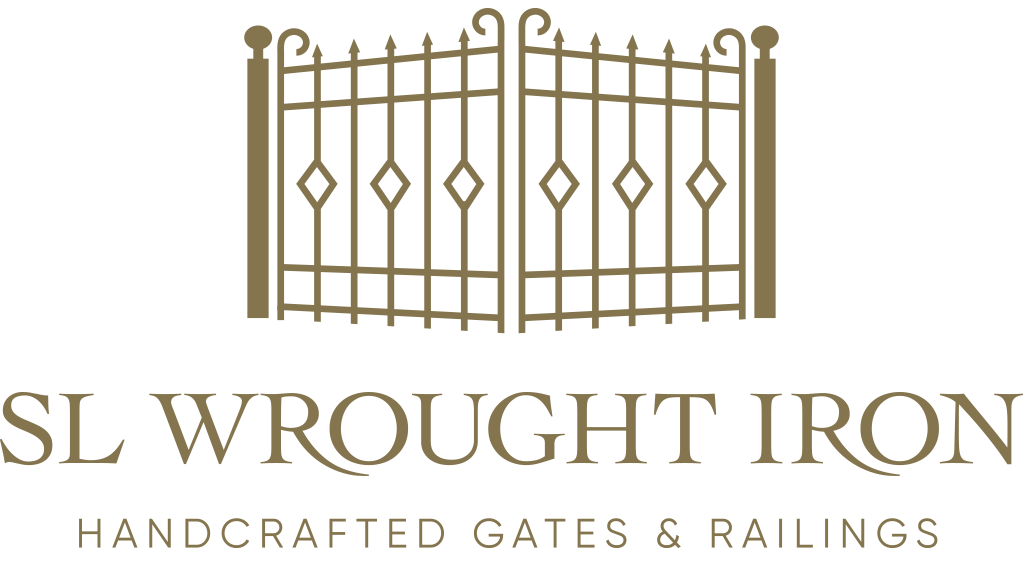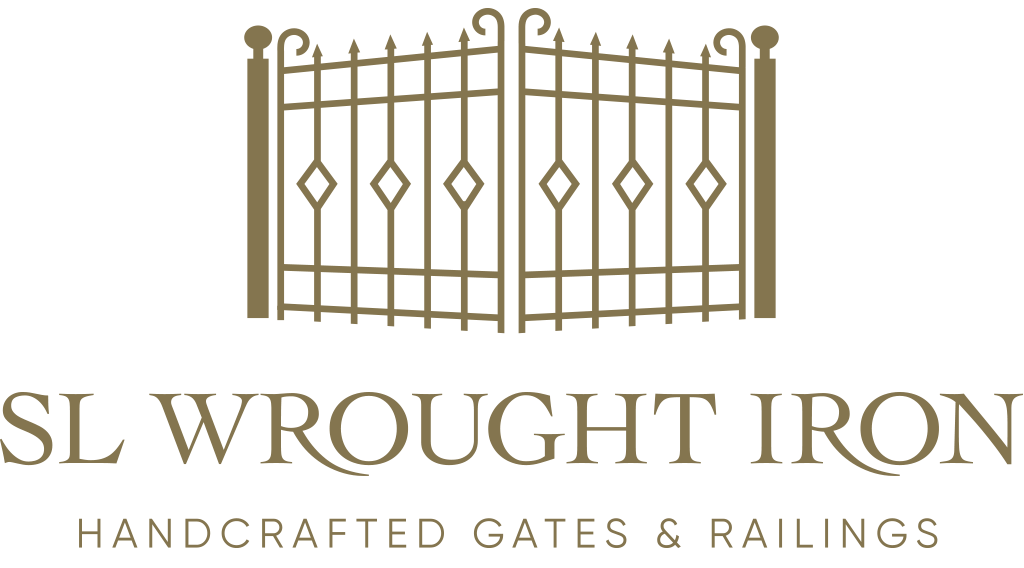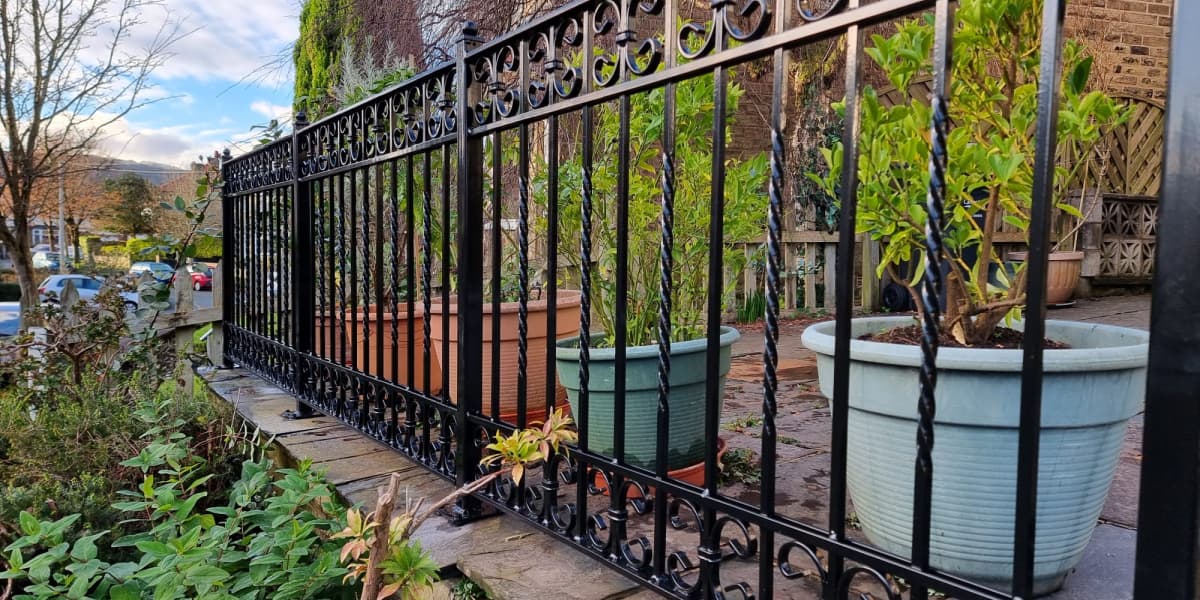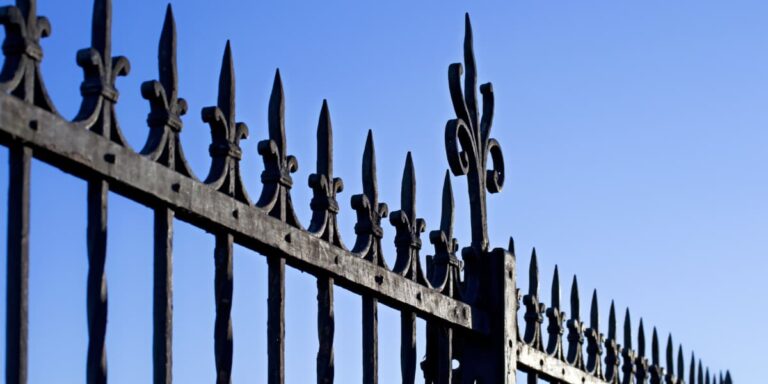If you’ve bought from us before here at SL Wrought Iron, or if you’ve read any of our recent articles, you may well be familiar with the distinction between wrought iron and mild steel, and the slightly strange relationship between them. In short, modern wrought iron metal gates and railings are substantially different to what they were a century ago – namely, in that modern “wrought iron” metal gates and railings are actually made out of mild steel.
A quick breakdown of wrought iron’s history
You may already know at least a little bit about this story, especially if you’ve read our post on exactly what wrought iron is. The term itself means ‘worked iron’, and we used it for hundreds (arguably thousands) of years in Western Europe. However, the wrought iron structures of old are not the same as the ones we use today. True wrought iron differs from mild steel in that technically speaking, it’s a crude alloy defined by its carbon content. It retains less than 0.8% carbon content, and since it was tough, malleable and easy to weld, it was the go-to material for a sizeable amount of our nation’s history.
Then in the last 100 years or so, several key developments have contributed to the gradual replacement of “true” wrought iron with mild steel. One of these key developments is the pioneering of the Bessemer process; a more efficient way to produce high-quality steel. That helped to skyrocket the commercial viability of mild steel (even though, somewhat confusingly, it’s still referred to as wrought iron). Here are five reasons why it remains the preferred choice for metal gates and railings
It’s more cost-effective
Mild steel’s cost-effectiveness arises from several factors. Firstly, the raw materials required for its production, such as iron ore and coal, are abundant and relatively inexpensive. There’s also the fact that advancements in steelmaking processes (such as the aforementioned Bessemer process) have significantly reduced production costs compared to the more labour-intensive methods used for wrought iron.
What’s more, the scalability of mild steel production allows for economies of scale, driving down unit costs and making it a more cost-effective option for large-scale projects and mass production. That’s a big part of why we’re able to continue providing you with the very best prices here at SL Wrought Iron!
It’s quicker to produce
Modern steelmaking processes have also revolutionised steel production by significantly reducing the time required to convert raw materials into finished steel products. In the Bessemer process, air is blown through molten pig iron to remove impurities, resulting in the rapid conversion of iron into steel. Electric arc furnaces use electricity to melt scrap steel and other raw materials, offering even faster production times. These advancements in steelmaking technology enable manufacturers to meet tight deadlines and respond quickly to fluctuations in market demand, making mild steel a preferred choice for meeting customer demand.
It’s even more durable
Mild steel offers superior durability compared to wrought iron due to its inherent properties and resistance to corrosion and environmental degradation. Mild steel can withstand exposure to moisture, chemicals, and harsh weather conditions without significant deterioration.
What’s more, advancements in coatings and surface treatments, such as galvanising and powder coating (both services we offer here at SL Wrought Iron) further enhance mild steel’s durability and longevity, making it suitable for outdoor use – or indeed, any other applications that require high structural integrity and low maintenance.
Better availability
Mild steel is readily available in a wide range of forms, sizes, and grades, making it a versatile and accessible material for various industries and applications. Steel mills and distributors maintain large inventories of mild steel products, which is one of the reasons why we’re able to ensure you’re never waiting too long for your own metal gates or railings to arrive.
By the same token, mild steel’s widespread use in construction, manufacturing, automotive, and other sectors contributes to its availability and affordability. This ready availability and supply chain infrastructure make mild steel a preferred choice for projects of all sizes and complexities, as opposed to true wrought iron, which is comparatively rare these days.
Greater design flexibility
While true wrought iron was known for its malleability, mild steel takes that one step further – offering unparalleled design flexibility compared to wrought iron, thanks to its malleability, strength, and compatibility with modern fabrication techniques. Steel can be easily shaped, formed, welded, and manipulated to create intricate and complex designs – as you’ll know if you’ve taken a look through the ranges we offer here at SL Wrought Iron!
In fact, whatever style you’ve envisioned for your home, you can count on us to have a range to match it. You can take a look at our full range on our homepage, or if you’re looking for something in particular, you can always contact us on 01254 236994 or info@slwroughtiron.co.uk, and we’ll be happy to advise!





